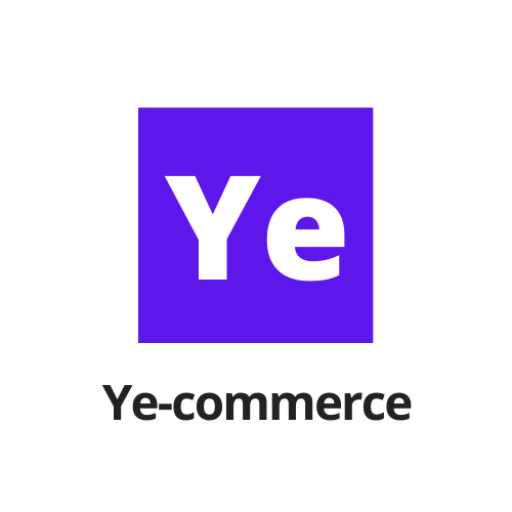Digital marketing as a concept might be tough to comprehend. Add to that the notion that there appear to be a gazillion and one digital advertising acronyms and branding abbreviations to fit any circumstance at any particular time, and it can be pretty perplexing. That is why we have compiled a list of the top 25 most commonly used digital acronyms and abbreviations throughout digital marketing.
But before we dive into digital advertising terms, ads acronyms, digital abbreviation, abbreviation for campaign, and abbreviation for advertising for full efficiency, here is what you need to know about the basics.
What is An Acronym?
An acronym is a term, name, or group of letters formed as an abbreviation of a lengthier phrase or statement to refresh your memory. Proximity like and, or off is not permitted. Every area or business has its collection of marketing acronyms and abbreviations. Do you want to be an associate or pursue a career in digital marketing? You must be aware of these if you wish to thrive in a sector such as digital marketing.
Various marketing experts may utilize various digital advertising strategies to grow their donor base, strengthen their brand recognition, and increase their digital exposure. This collection, which includes everything from fundamental terminology to more sophisticated jargon, can help you expand your lexicon and understand the digital advertising market.
Below we have discussed some most common Acronyms you ought to know:
Cheat Sheet
-
SEO (Search Engine Optimization)
-
SERP (Search Engine Results Page)
-
CTA ( Call To Action)
-
CPC (Cost Per Click)
-
CPL (Cost Per Lead)
-
CPT (Cost Per Thousand)
-
CTR (Click Through Rate)
-
BR (Bounce Rate)
-
KPI (Key Performance Indicator)
-
CRO (Conversion Rate Optimization)
-
CMS (Content Management System)
-
IAB (Interactive Advertising Bureau)
-
RTB (Real-time Bidding)
-
CX (Customer Experience)
-
DDM (Data-Driven Marketing)
-
VTC (View Through Click)
-
ROS ( Run-Of-Site)
-
DMA (Designated Market Area)
-
SOV (Share of Voice)
-
DSP (Demand Side Platform)
-
PR (Page Rank)
-
CPA (Cost Per Acquisition)
-
PPV (Pay Per View)
-
SEM (Search Engine Marketing)
-
RON (Run of Network)
The Acronyms to Know
SEO (Search Engine Optimization)
SEO complements SEM well; nevertheless, SEO improves your website’s exposure naturally via search engines’ non – payment (free) outcomes. Have you ever wondered how your nonprofit may be ranked first on a Google search results page? You may take numerous strategies to enhance your rating, such as employing targeted keywords and consistently producing high-quality content.
SERP (Search Engine Results Page)
This digital marketing abbreviation refers to search queries displayed on pages after keywords by Google or other internet engines.
As a result, they can take the shape of graphs, pictures, videos, or highlighted snippets such as a list, chart, or text.
CTA ( Call To Action)
Your “request” is your call to action and the customer’s next move following viewing your advertisement. “Learn More,” “Donate Now,” and “Watch Video” are some examples. CTA alludes to the picture and functionality you post on your Hubspot web page and other Marketing Automation Systems.
CPC (Cost Per Click)
The cost of each click on your ad. Remember that a tap is not distinctive to the individual doing the activity. If a single individual clicks on your ad three times, you will be billed for three clicks.
In short, Total Cost Charged = Number of Clicks X The Unit Cost per Click (Cost Per Click)
CPL (Cost Per Lead)
The CPL model indicates that you only charge for leads generated by your marketing campaign. As per the Chamber of Commerce’s website, the CPL cost model is very marketable but is not guaranteed to supply fully. It is computed by splitting the price of a lead generation campaign by the number of leads generated.
CPT (Cost Per Thousand)
CPT, also known as Cost Per Mille or Cost Per Thousand, is the price you must spend for 1000 viewers or engagements from a particular digital ad on a specific website.
CTR (Click Through Rate)
This is the number of clicks on your ad divided by the number of times it has been displayed. The CTR % helps you to gauge how well your ad is doing. The larger the proportion, the greater the level of participation.
BR (Bounce Rate)
The ratio or proportion of target consumers that visit your website but leave/exit (“bounce”) without traveling to any other pages is referred to as the bounce rate.
As a result, it is a technique for assessing the performance of your website. Higher engagement is found on websites with lower bounce rates.
KPI (Key Performance Indicator)
The initial stage in every digital advertising campaign is to define your objectives and the performance metrics you intend to track. The critical measurements you intend to measure are known as key performance indicators (KPIs). They are your performance metrics and should determine which advertising efforts best match your objectives.
CRO (Conversion Rate Optimization)
CRO is an abbreviation for Conversion Rate Optimization, a marketing technique for expanding the amount of intended web page or landing page visitors who take the necessary actions. Some examples are completing a form, joining up for a particular service, purchasing, clicking a specific link such as “Add to Cart,” or filling out a specific form.
CMS (Content Management System)
CMS is a marketing abbreviation for Content Management Systems (CMS), software platforms or technology with a user interface. WordPress, Wix, and Shopify are just a few examples of CMS for producing websites or blogs. It contributes to improving the consumer experience.
IAB (Interactive Advertising Bureau)
Many publishers will make use of the term IAB. The Interactive Advertising Bureau (IAB) is a commercial group that establishes industry standards for digital advertising, including ad requirements. Consider these requirements to be the gold benchmark and best practice for anything connected to digital advertising.
RTB (Real-time Bidding)
This is a technique for CPM to purchase unsold merchandise through a programmatic auction. Your CPM offer is not guaranteed and may be overturned by other marketers. The winning bidder gets first dibs on the stock.
CX (Customer Experience)
CX is yet another popular digital marketing acronym for Customer Experience. It relates to how a consumer sees your products or services during the purchasing process. Clients can help you promote your services by using social networks or word-of-mouth.
DDM (Data-Driven Marketing)
As the name suggests, this is a digital marketing approach based on meaningful information recorded from many domains to aid in marketing campaign choice.
VTC (View Through Click)
VTC assesses the effectiveness of a marketing campaign depending on a client’s decision to click on an advertisement or transform after previously watching the same ad without proceeding.
ROS ( Run-Of-Site)
When you run your digital advertising through a site channel, you send your online ads to a specific website. Expect the cycle to be “site-wide” rather than page-specific.
DMA (Designated Market Area)
DMA first concentrated on tv commercials. However, today’s marketing world refers to geographical locations, territories, or nations that may be addressed with digital marketing efforts.
SOV (Share of Voice)
The SOV is a measurement depending on the proportion of time your ad is seen compared to other marketers. For instance, if five advertisers rotate advertising on the site evenly, each advertiser would get a 20% share of voice. If there is just one advertisement on the website, the advertiser has a one hundred percent stake.
DSP (Demand Side Platform)
A DSP is a platform that enables marketers to buy visual ad inventory from Real-Time Bidding (RTB) networks such as Google. DSP providers like Mediamath or Turn can assist you in running numerous campaigns across multiple networks with efficiency.
PR (Page Rank)
This abbreviation also stands for Public Relations. However, in the context of digital marketing, it relates to how Google’s Search Algorithm ranks websites in search results upon a keyword search.
CPA (Cost Per Acquisition)
The cost per acquisition model has applied to a specific “activity” that the marketer determines. Like the CPL model, the CPA model is not assured to provide in whole and may need many modifications to achieve success. It should be noted that it is intensely dynamic and may incur a higher cost.
PPV (Pay Per View)
Pay-per-view is described as your movie or ad/image shown on the website and 100% insight for a set period determined by the publication. What is the advantage? Paying on a PPV popup will guarantee that your ad was launched and watched by visitors who browse fast.
SEM (Search Engine Marketing)
Advertisements that show on Google Search, Bing Search, or Yahoo Search are an example of this. Your ad would display based on the search parameters, keywords, and the maximum budget you have set. Nonprofit organizations are in luck! Google provides organizations with $10,000 in free advertising.
RON (Run of Network)
When you run your digital advertising over a network channel, you are distributing your online ads on a network that rotates ads. These are publishers who may own many websites. This rotation is network-wide rather than site- or page-specific.
Digital Marketing Is Intense
To better understand digital marketing, the top popular PPC acronyms, SEO acronyms, sales abbreviations, digital marketing acronyms, online marketing acronyms, and promotional abbreviations have been supplied. Reacquaint yourself with these essential phrases and ideas to better grasp the realm of digital marketing and find the most acceptable methods for your company.
Did we miss anything?
If you did not see any digital marketing or advertising acronyms that you came here looking for then let us know in the comments, we are always working towards a more comprehensive list for people who find us here.
Cheers!
The Yecommerce Team


I’m not certain the place you’re getting your info,
however good topic. I needs to spend a while learning more or working out more.
Thank you for wonderful information I was looking for this information for my mission.